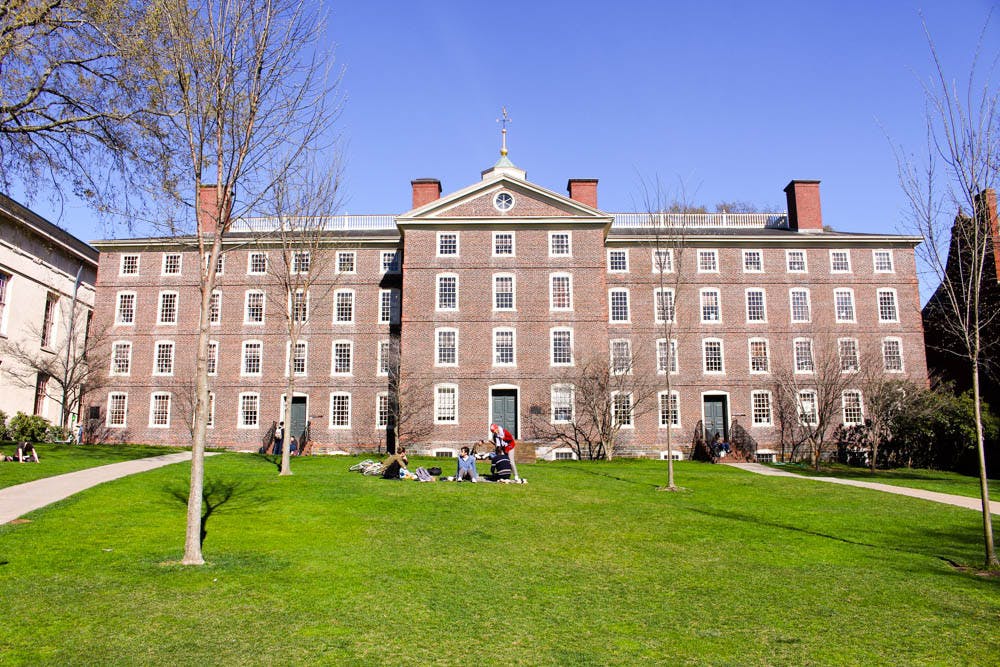Following the midpoint of the 10-year strategic plan “Building on Distinction,” President Christina Paxson P ’19 and Provost Richard Locke P ’18 discussed the plan’s accomplishments and steps the University must take in the next five years to reach the outlined goals.
“Building on Distinction” aims to facilitate the growth and development of the University’s academics, community and campus. Paxson presented the strategic plan at the Corporation’s first formal meeting in 2013 and the plan was launched in 2014, The Herald previously reported.
Achievements of the first five years
The BrownTogether campaign, a fundraising effort under the strategic plan to enhance investment in education, research programs and campus development, garnered $2.26 billion of the $3 billion goal by Dec. 5, 2019, according to the campaign’s website. The University’s endowment grew to an “all-time high” of $4.2 billion at the end of FY19, according to a Brown news release.
Grant funding for education and research in the past five years exceeded the $800 million goal laid out in the plan, as the University expended $860 million toward research in the humanities and sciences.
Major gifts have also enhanced the University’s research programs and opportunities, as annual research expenditures were increased to $196 million in FY19, according to the University news release. Raising funds for the Carney Institute for Brain Science was “one of the strategic areas we highlighted” for the plan, Paxson said.
BrownTogether has also helped establish 75 endowed chairs toward their goal of 123, Locke said.
To increase academic and career opportunities, Wintersession was launched in January 2017, which currently allows students to enroll in courses on campus or online, or to study abroad with professors through destination courses. The Nelson Center for Entrepreneurship, which received a $25 million gift from Jonathan Nelson ’77 P’07 P’09, was launched in 2016 and offers programs and summer opportunities for students interested in working in start-up companies.
New initiatives established under the strategic plan include the Brown Arts Initiative, the Brown Institute for Translational Science and the Data Science Initiative. The Watson Institute for International and Public Affairs and the School of Engineering were also expanded.
Since the launch of the 2016 “Pathways to Diversity and Inclusion: An Action Plan for Brown University” as part of the strategic plan, the number of faculty from historically underrepresented groups was increased by 34 percent, The Herald previously reported.
“I am most proud of the DIAP,” Locke said, while acknowledging that there is still work to do to make the University more inclusive.
Through the DIAP, the University is committed to doubling the number of faculty and graduate students who self-identify as members of a historically underrepresented group by 2022.
In the first two years of the DIAP, the percentage of graduate students from HUGs increased from 16.4 in 2016 to 22 in 2018, according to the Office of Institutional Equity and Diversity’s website. There were slight decreases in enrollment among first generation college students and among students who identify as American Indian, Alaska Native and Native Hawaiian or other Pacific Islander, according to the DIAP 2019 Annual Report.
Ongoing challenges and future plans
The next five years of “Building on Distinction” will address issues that have arisen and work towards the ultimate goals of the plan.
In order to promote the interdisciplinary approach to education in the Open Curriculum, several departments merged into more expansive programs. The new International and Public Affairs concentration, which merged the International Relations, Development Studies and Public Policy degrees, prompted debates among students and faculty, some of whom were concerned about the change, The Herald previously reported.
“How to balance the work that takes place in disciplinary departments and those in interdisciplinary” centers is one of the challenges that the University needs to navigate, Locke said.
Locke noted that funding for graduate student fellowships poses another challenge. “It’s usually harder to raise money for graduate student fellowships than it is for undergraduates,” he said. Convincing a community of mostly undergraduate alumni “that it’s worthwhile for them to also support our graduate program and (convincing them of) how important these graduate programs are at a world-class research university” remains difficult.
“Building on Distinction” also raised the idea of implementing need-blind admission processes for international, transfer, undocumented and Deferred Action for Childhood Arrival students. While the University announced the implementation of need-blind aid for undocumented and DACA students in 2016, Paxson said that it would be difficult to predict when funds would be sufficient to implement a fully need-blind process for international students.
Moving forward, the University plans to expand financial aid packages to current students and aid available to undergraduate student veterans, Locke said. Since the launch of the strategic plan, the University has awarded $927 million in scholarship aid and replaced student loans in undergraduate financial aid packages with grants through the Brown Promise initiative.
Renovations to dormitories will also continue as construction of a new health and wellness center and residence hall is set to be completed by 2021, and another residence hall is slated to open by the 2022-2023 academic year. “As we develop new dormitories, it will also offer opportunities to renovate existing dormitories,” Paxson said.
“I am really proud of the fact that the plan has actually worked,” she said. “Many things have changed at Brown as a result and it’s due to the work of a large number of people working in a very collaborative way.”
Correction: A previous version of this article described President Paxson as saying it would be difficult to predict when the University could implement a fully need-blind admission process for international, transfer, undocumented and DACA students. In fact, President Paxson's statement only referred to international students; undocumented and DACA students have been admitted on a need-blind basis since the class which entered in fall 2017. The Herald regrets the error.





